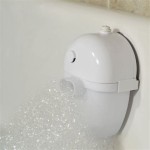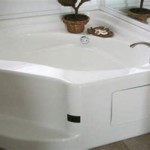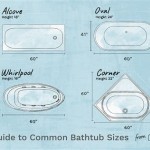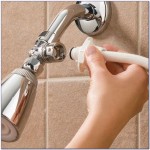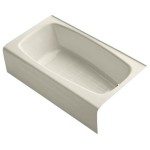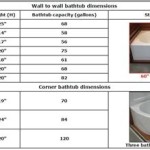Acrylic Bathtubs: Pros and Cons to Consider
Acrylic bathtubs have become increasingly popular due to their affordability, durability, and versatility. However, it's important to weigh the pros and cons before making a decision.
Pros of Acrylic Bathtubs:
- Affordability: Acrylic bathtubs are generally less expensive than other materials like porcelain or cast iron.
- Lightweight: Acrylic is a lightweight material, making it easy to install and transport.
- Durability: Acrylic is resistant to scratches, dents, and fading, ensuring long-lasting performance.
- Non-Porous: Acrylic bathtubs do not absorb moisture, preventing bacteria growth and mold formation.
- Versatile: Acrylic tubs are available in a wide range of shapes, sizes, and colors, offering customization options.
Cons of Acrylic Bathtubs:
- Can Scratch Easily: While acrylic is durable, it can scratch more easily than porcelain or cast iron.
- Difficult to Repair: Scratches in acrylic tubs can be difficult or impossible to repair, potentially affecting the appearance.
- Prone to Staining: Harsh chemicals or dyes can stain acrylic bathtubs if not cleaned properly.
- Less Retaining Heat: Acrylic does not retain heat as well as cast iron or porcelain, so you may have to add hot water more frequently.
- Lower Resale Value: Acrylic bathtubs may have a lower resale value compared to tubs made of more premium materials.
Conclusion:
Acrylic bathtubs offer a range of advantages, including affordability, durability, and customization options. However, it's important to consider the potential drawbacks, such as susceptibility to scratches and staining. By carefully weighing the pros and cons, homeowners can make an informed decision about whether an acrylic bathtub is the right choice for their bathroom.

The Acrylic Bathtub Debate Pros Cons And Warnings

9 Pros Cons Of Acrylic Tubs Long Home

Acrylic Vs Resin Tubs Pros Cons Of Each Long Home

What Is An Acrylic Tub Beginners Guide To Tubs 2024

9 Pros Cons Of Acrylic Tubs Long Home

4 Common Bathtub Materials Pros Cons What To Buy For Your Bathroom

Acrylic Bathtubs Guide Pros And Cons Of Tubs

Cast Iron Vs Acrylic Tub Important Things To Know In 2024

Bathtub Buyer S Guide Fine Homebuilding

Acrylic Tubs Everything You Need To Know Qualitybath Com Discover



